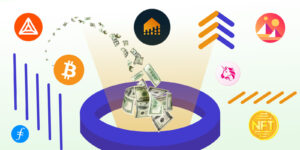
Introduction
As global attention sharpens around the climate crisis, educational institutions are increasingly seen not only as centers of learning but as catalysts for sustainability innovation. In Singapore—one of Asia’s most advanced economies and a hub for environmental stewardship—the push for climate-conscious operations in universities and polytechnics is gaining strong momentum. One powerful tool accelerating this shift is the Microsoft Sustainability Manager. Designed to help organizations collect, monitor, and act on sustainability data, this platform is playing a transformative role in Singapore’s Institutes of Higher Learning (IHLs).
From carbon tracking to student engagement and curriculum integration, the microsoft environmental sustainability solution in Singapore is helping to shape a new generation of eco-literate leaders—while enabling institutions themselves to lead by example.
Singapore’s Green Commitment and the Role of Academia
Singapore’s Green Plan 2030 sets ambitious goals for reducing carbon emissions, greening infrastructure, and cultivating a climate-resilient society. A critical component of this transformation is empowering the next generation with the knowledge and tools to act. Institutes of Higher Learning are uniquely positioned to influence this change.
Universities and polytechnics not only house future business and political leaders—they also possess the infrastructure, research capability, and agility to trial cutting-edge sustainability solutions. Recognizing this, many IHLs are taking steps to align operations with national climate goals. Microsoft Sustainability Manager serves as both a learning tool and an operational asset in this effort.
Microsoft Sustainability Manager in Singapore: What Is It?
The Microsoft Sustainability Manager is a cloud-based platform built on Microsoft Cloud for Sustainability. It helps organizations unify their environmental data, track Scope 1, 2, and 3 emissions, set science-based targets, and generate actionable insights to reduce their environmental footprint.
In the Singaporean academic context, this platform serves several strategic purposes:
- Operational Optimization: Monitor energy use, waste, water, and greenhouse gas emissions across campuses.
- Curriculum Integration: Teach students how to work with real-time sustainability data.
- Research and Innovation: Enable new research into climate tech, energy modeling, and AI for sustainability.
- Student Engagement: Offer hands-on experience with industry-standard sustainability tools.
Transforming Campus Operations with Real-Time Insights
Universities are large entities, often with hundreds of buildings, thousands of daily users, and significant carbon footprints. Managing sustainability efforts at this scale requires accurate and dynamic tools—this is where Microsoft Sustainability Manager in Singapore becomes invaluable.
For example, a university like the National University of Singapore (NUS) could use the platform to track:
- Monthly electricity consumption by department
- Carbon output from on-campus laboratories
- Emissions from staff and student commuting patterns
- Waste output and recycling effectiveness
By consolidating this data in a centralized dashboard, facilities managers and sustainability teams can pinpoint inefficiencies and craft more targeted action plans—such as retrofitting energy-draining buildings, shifting to cleaner transport alternatives, or optimizing water consumption in science labs.
Integrating Sustainability Education into the Curriculum
One of the most exciting uses of Microsoft Sustainability Manager in Singapore’s IHLs is its integration into academic programs. Rather than teaching sustainability theory in isolation, instructors can give students hands-on experience with a tool that businesses and governments actually use.
Courses in environmental science, data analytics, urban planning, and even economics are incorporating real-world datasets from the platform. This equips students with a practical understanding of how sustainability metrics are collected, analyzed, and turned into policy or operational changes.
Additionally, many institutions are exploring capstone projects where students use the Sustainability Manager to propose carbon reduction initiatives based on real institutional data. These experiences don’t just prepare students for green jobs—they prepare them to lead the sustainability transformation in their future workplaces.
Driving Interdisciplinary Research and Innovation
Singapore’s higher learning institutions are well-regarded for their research capabilities. The Microsoft Sustainability Manager enables interdisciplinary research by providing high-quality sustainability datasets that can be analyzed using AI, machine learning, and predictive modeling tools—all within the Microsoft ecosystem.
Faculty and postgraduate researchers are using the platform to:
- Simulate the impact of policy interventions on campus emissions
- Model the lifecycle carbon cost of different construction materials
- Analyze behavioral data to encourage eco-friendly habits among students
- Integrate IoT and building automation systems with the platform for smarter sustainability insights
This convergence of environmental science, AI, data science, and behavioral psychology wouldn’t be possible without a unified digital backbone—exactly what Microsoft’s solution provides.
Engaging the Student Community in Climate Action
Digital sustainability platforms also present a new way to engage student clubs and environmental groups. By offering transparency into campus sustainability metrics, the Microsoft Sustainability Manager in Singapore fosters accountability and activism.
For example:
- A student-led sustainability council could use the dashboard to track monthly reductions in single-use plastics on campus.
- Clubs could run data-driven campaigns to reduce energy usage during peak months.
- Hackathons could be held where students develop apps that tap into Sustainability Manager APIs to offer personalized tips to reduce one’s carbon footprint.
Such initiatives not only foster climate literacy but also cultivate ownership and pride among students in their institution’s green achievements.
Partnerships and Industry Alignment
Singaporean institutions that adopt the Microsoft Sustainability Manager are also aligning themselves with the broader industry movement toward transparent ESG reporting. This boosts their reputation and strengthens relationships with green investors, accrediting bodies, and governmental agencies.
Collaborations between IHLs, Microsoft, and sustainability-focused enterprises are also underway, with a focus on training future ESG professionals. For instance:
- Joint certifications in ESG analytics
- Internships that use Microsoft tools in sustainability departments
- AI for sustainability bootcamps co-hosted by Microsoft and leading universities
These efforts help bridge the gap between education and industry, giving Singaporean students a competitive edge in the global green economy.
Challenges and Considerations
While the benefits are clear, adoption is not without challenges. These include:
- Data Silos: Integrating campus-wide data across departments and systems can be technically complex.
- Cost: While Microsoft offers educational discounts, licensing and implementation can still strain tight university budgets.
- Change Management: Encouraging faculty and administrative staff to shift to a new system requires dedicated training and ongoing support.
Nonetheless, with strategic planning and strong leadership, these hurdles are surmountable—and the long-term payoff is substantial.
Conclusion: A Green Digital Future for Education
The Microsoft Sustainability Manager in Singapore is far more than just a corporate ESG tool—it is an educational catalyst, a research enabler, and a campus operations optimizer. By leveraging this platform, Singapore’s Institutes of Higher Learning are preparing students not just for exams, but for the environmental challenges of the 21st century.
As Singapore marches toward a low-carbon future, its universities must be models of sustainability, not just in what they teach, but in how they function. Microsoft’s tool is helping them achieve that dual mission—setting the standard for digital sustainability education across Southeast Asia and beyond.





